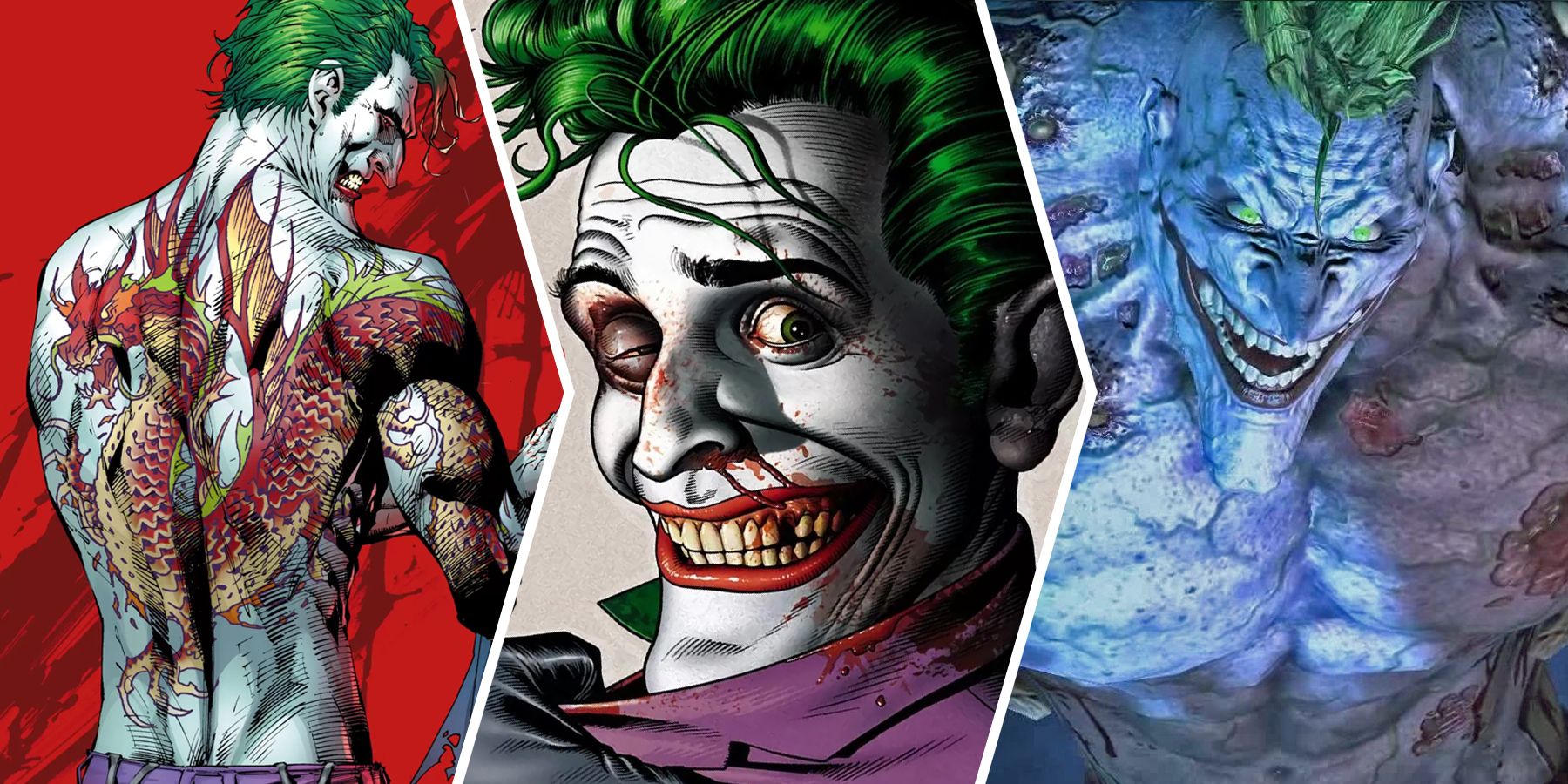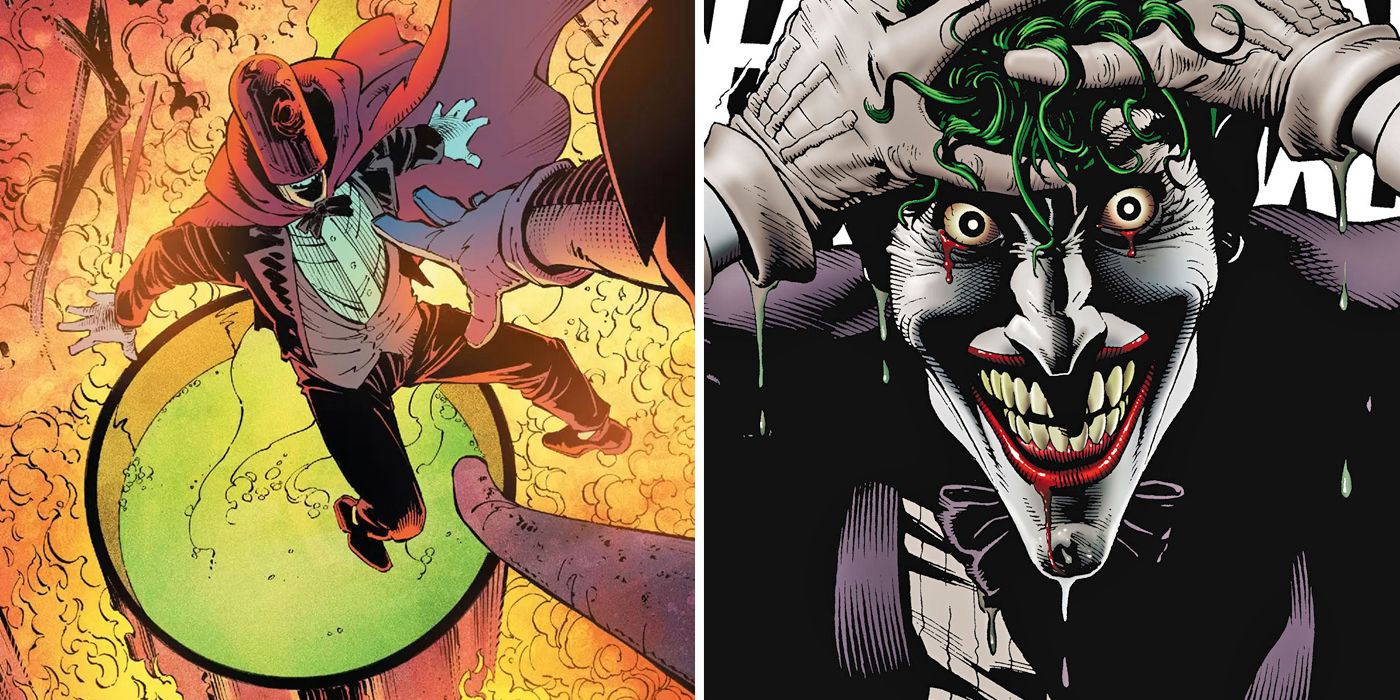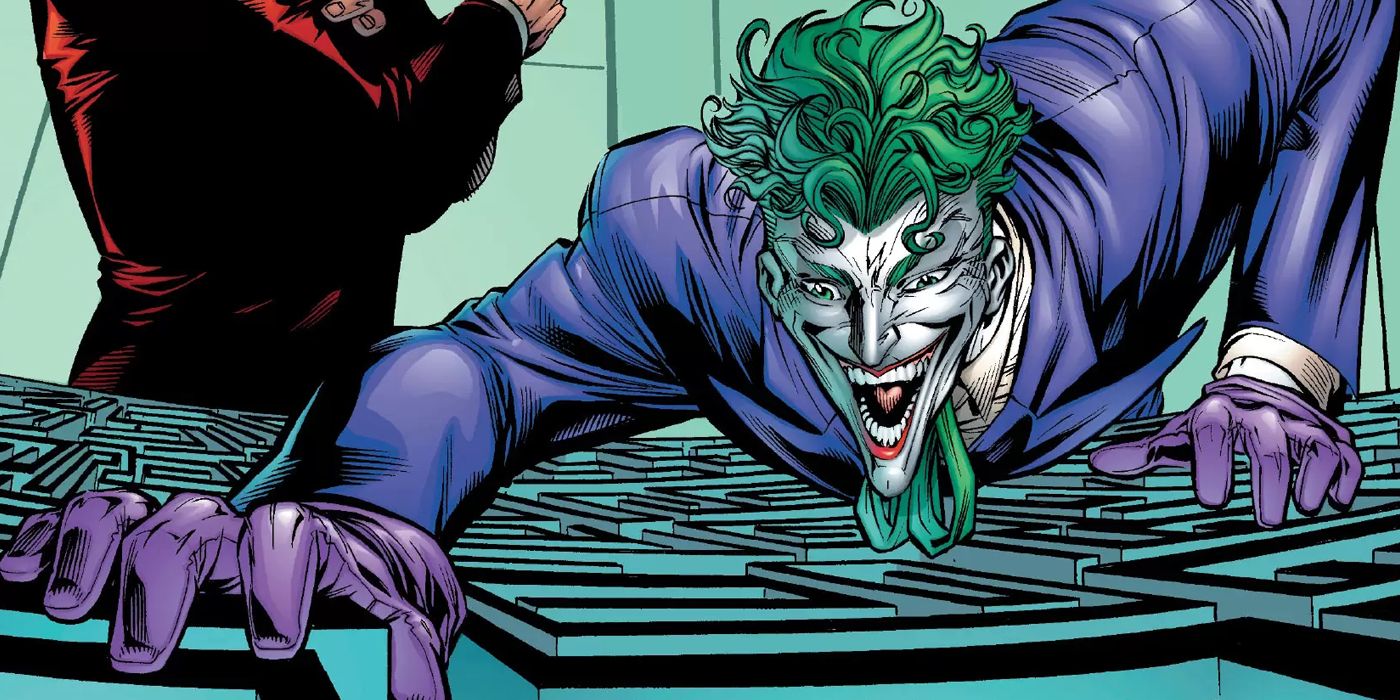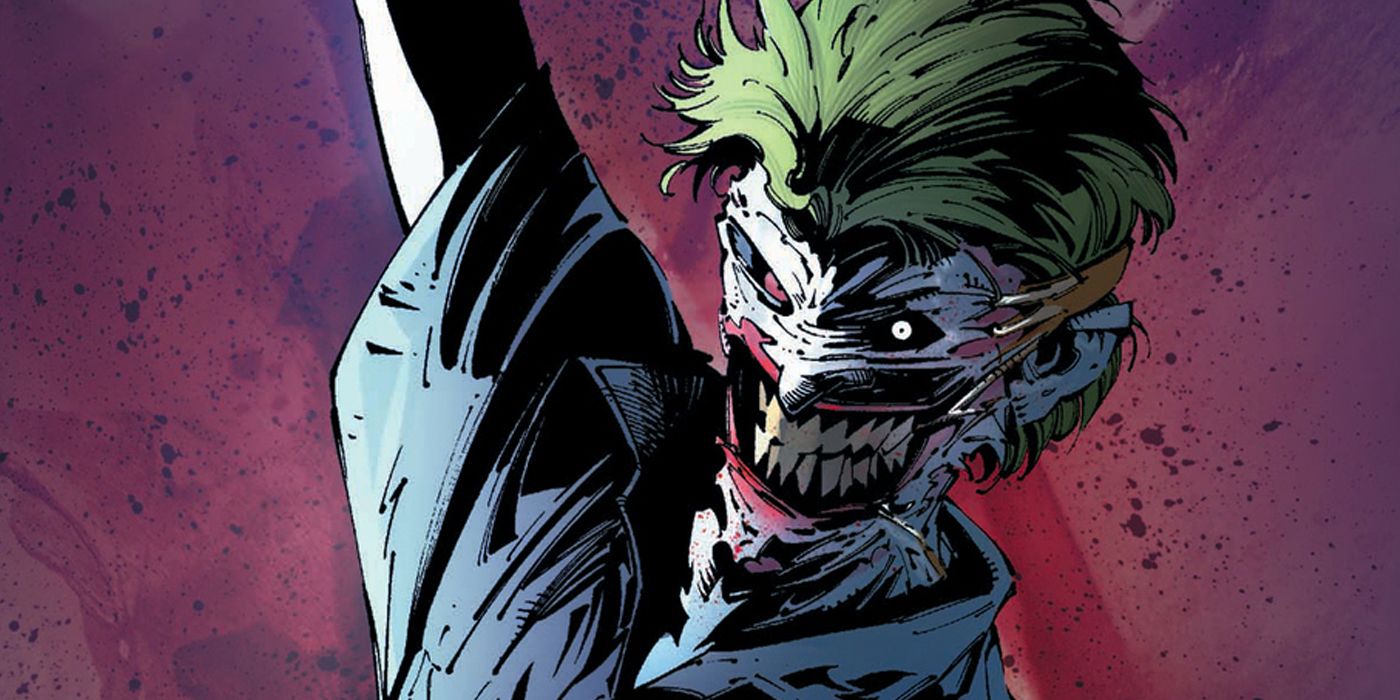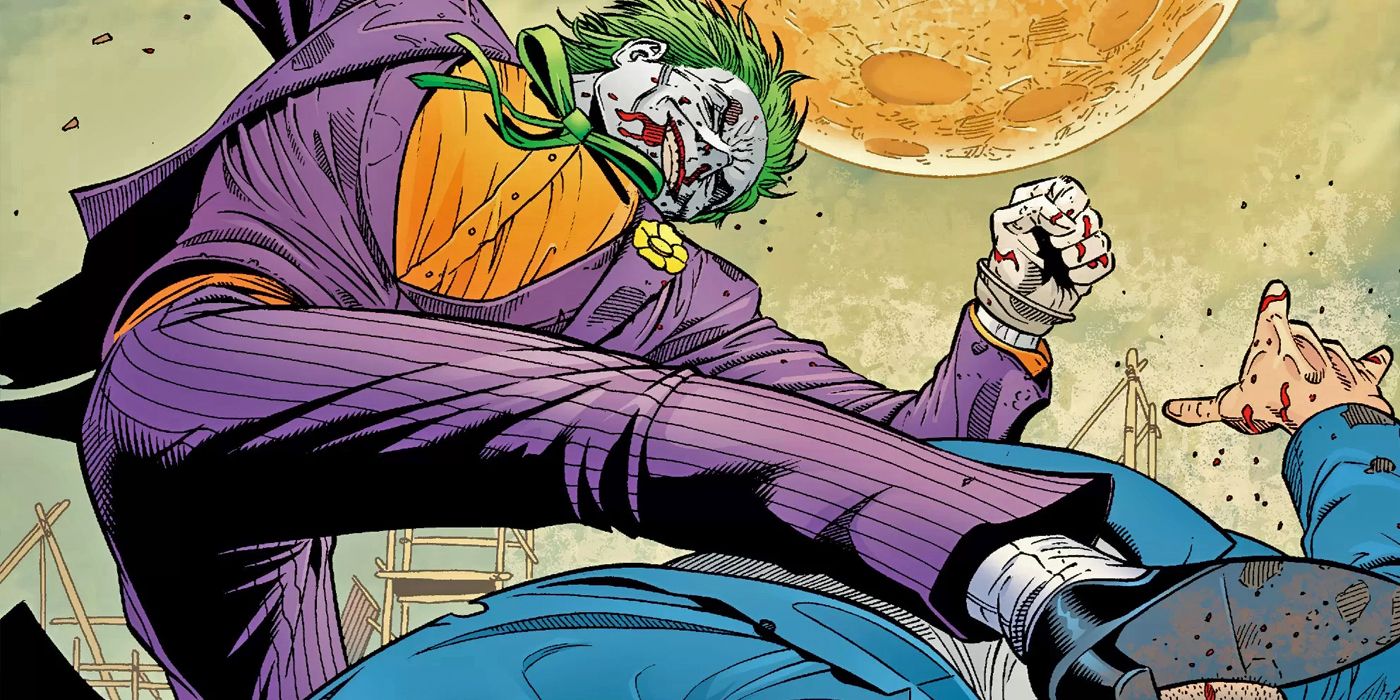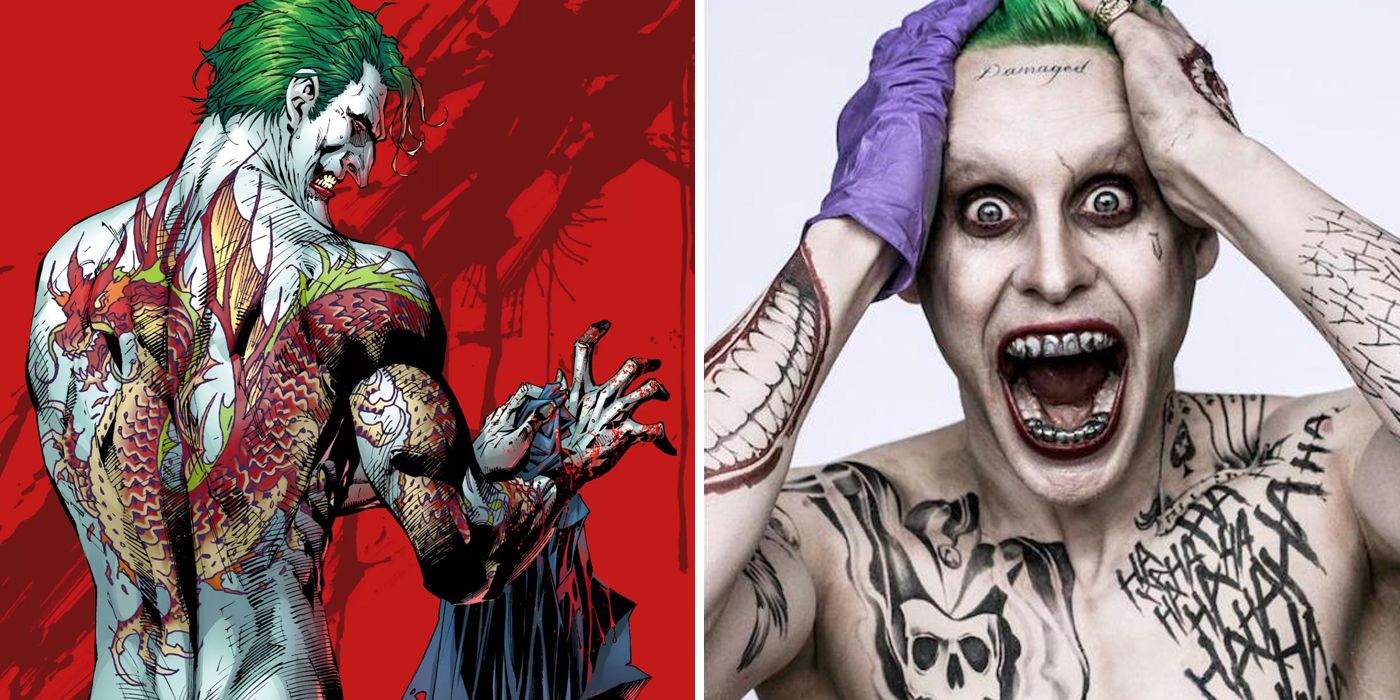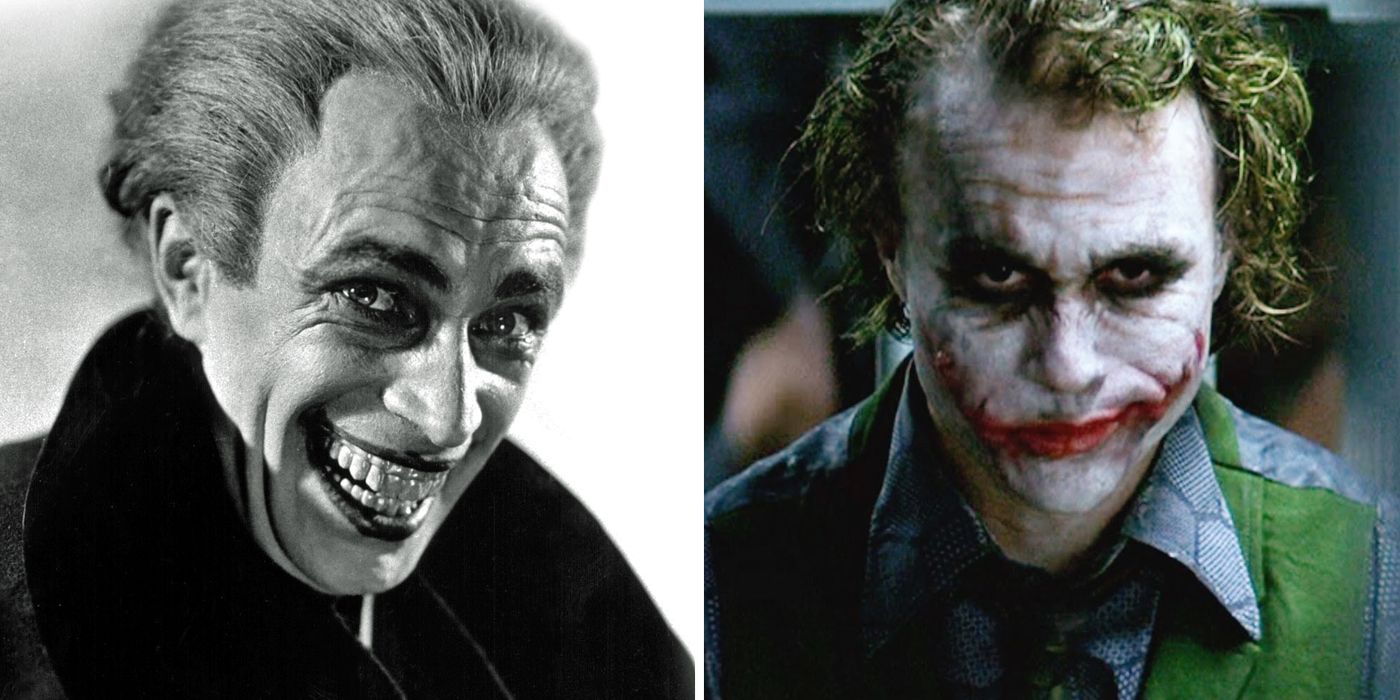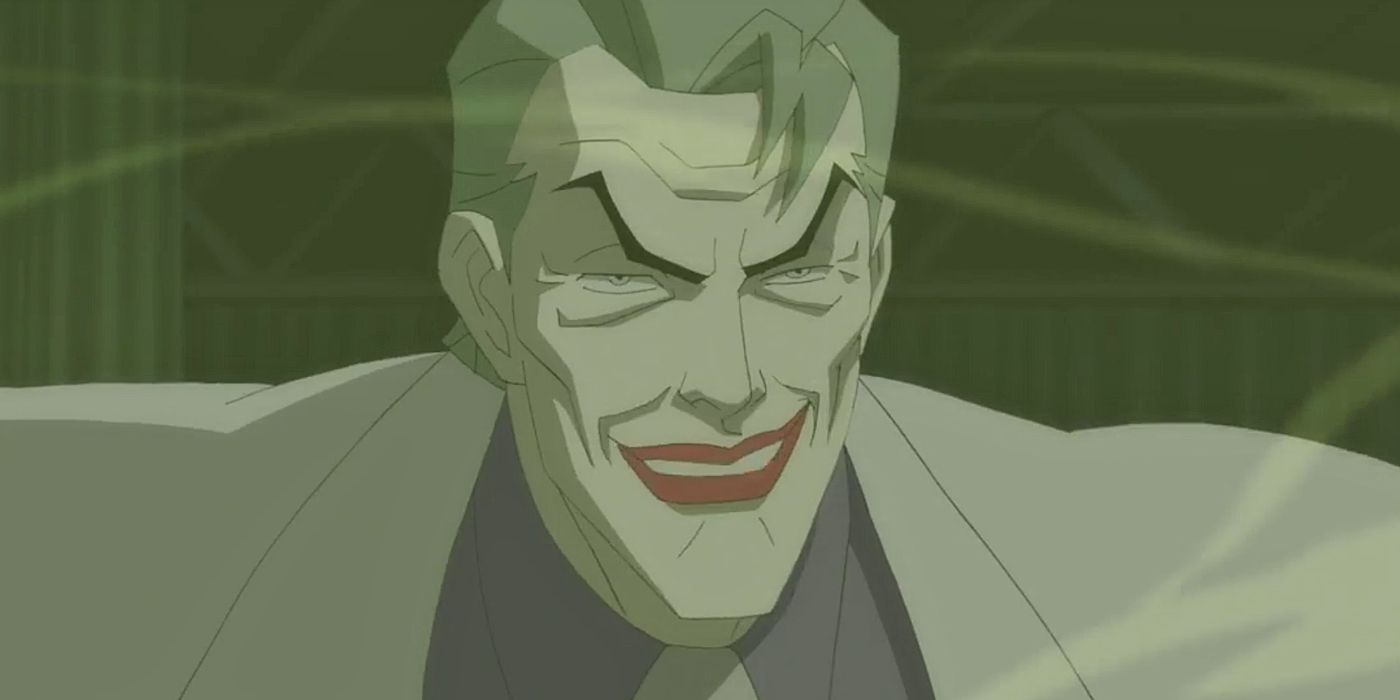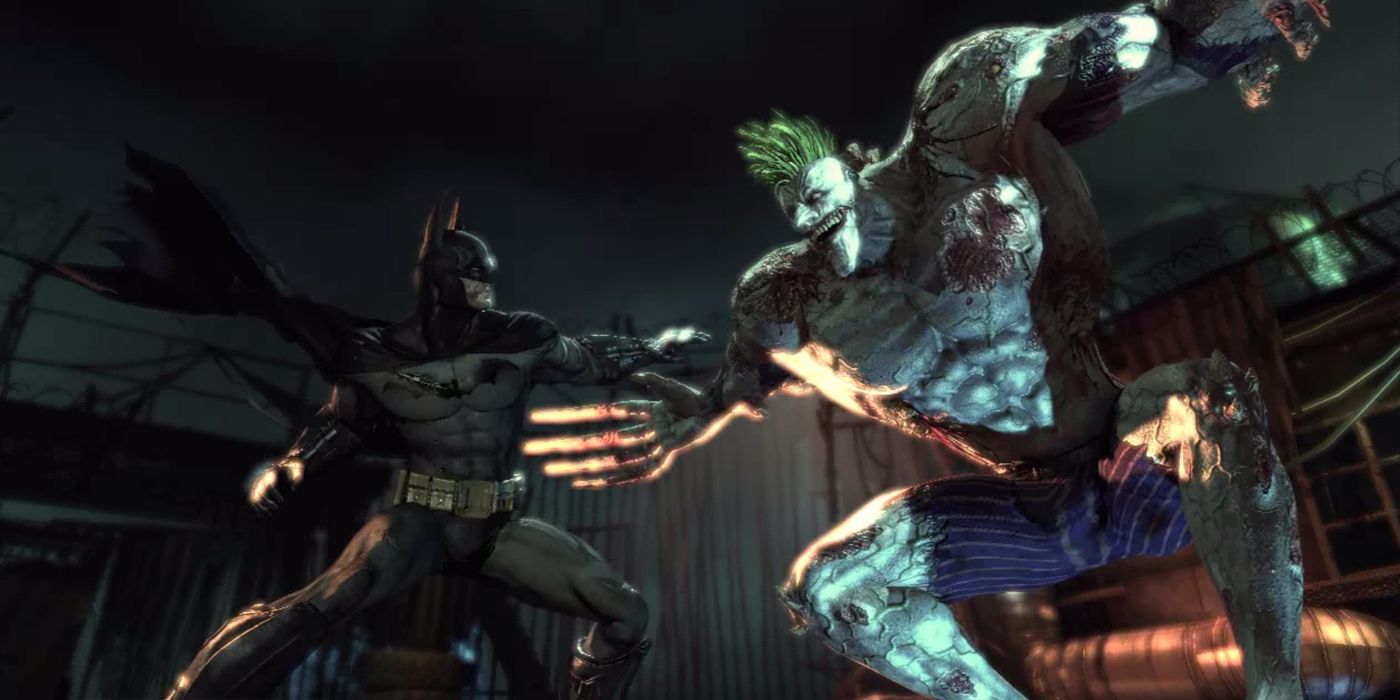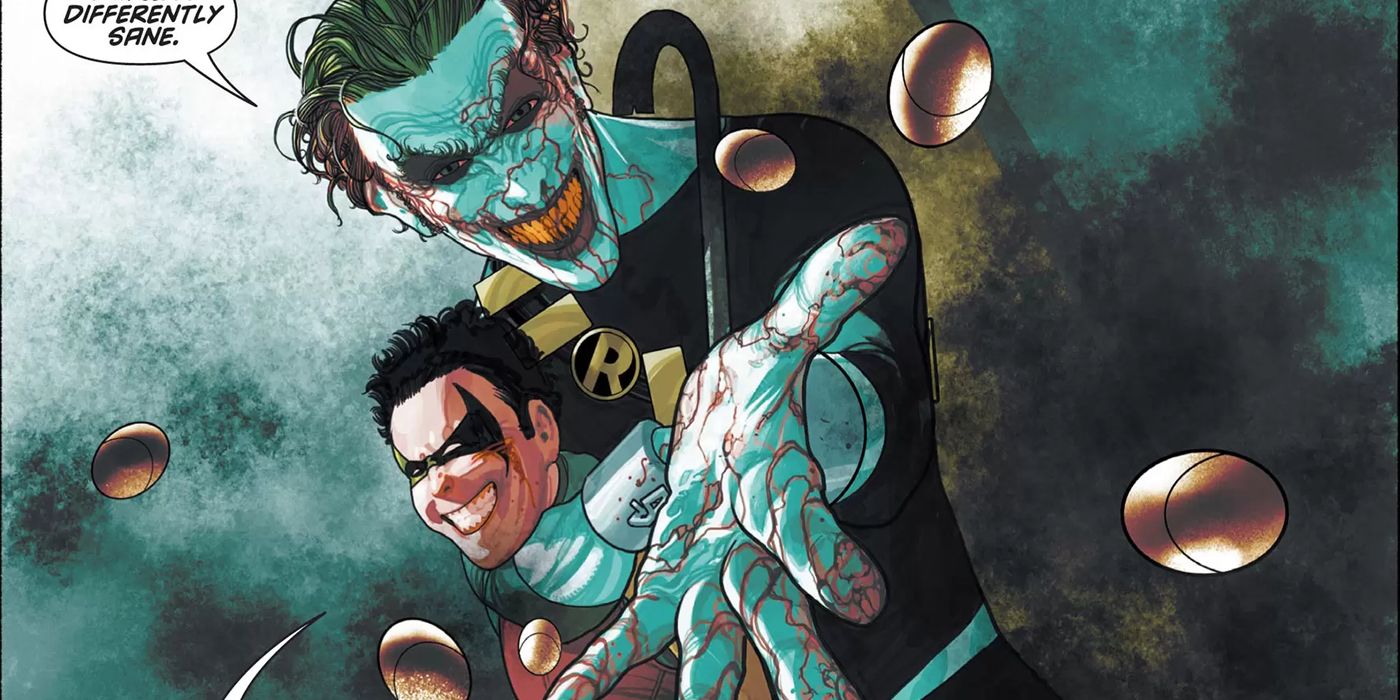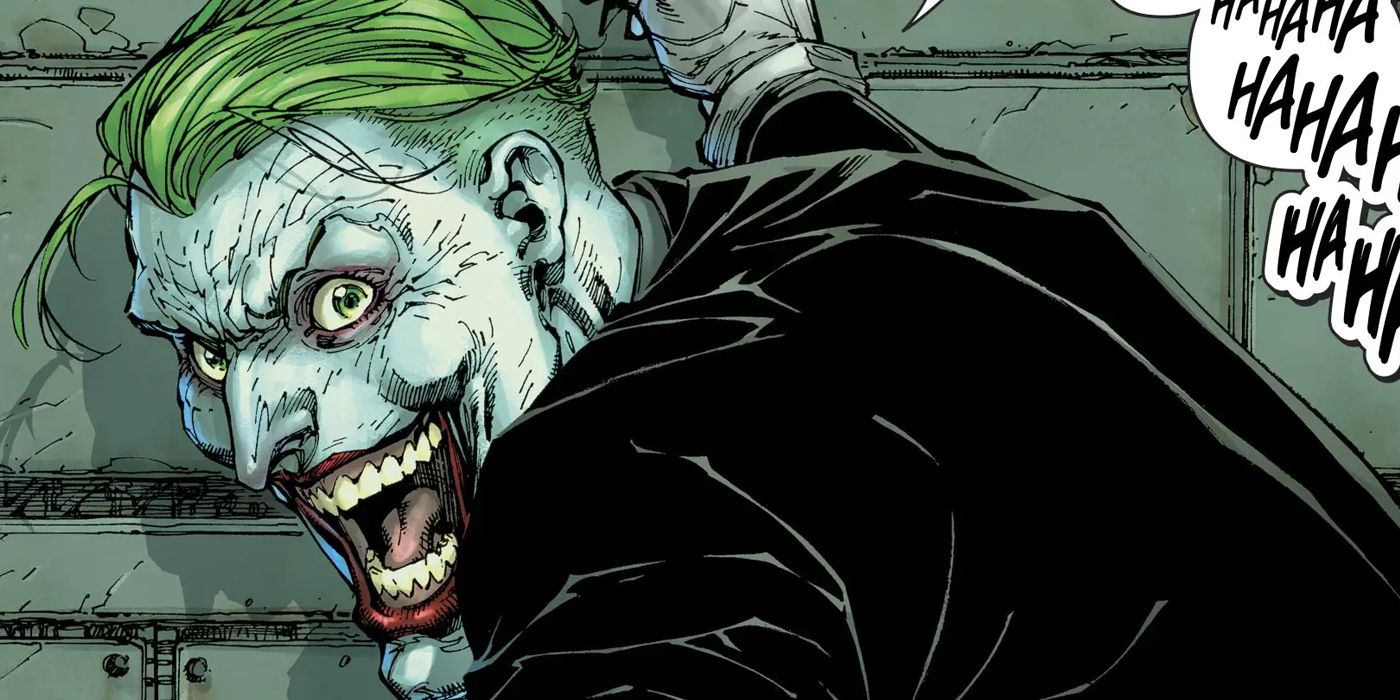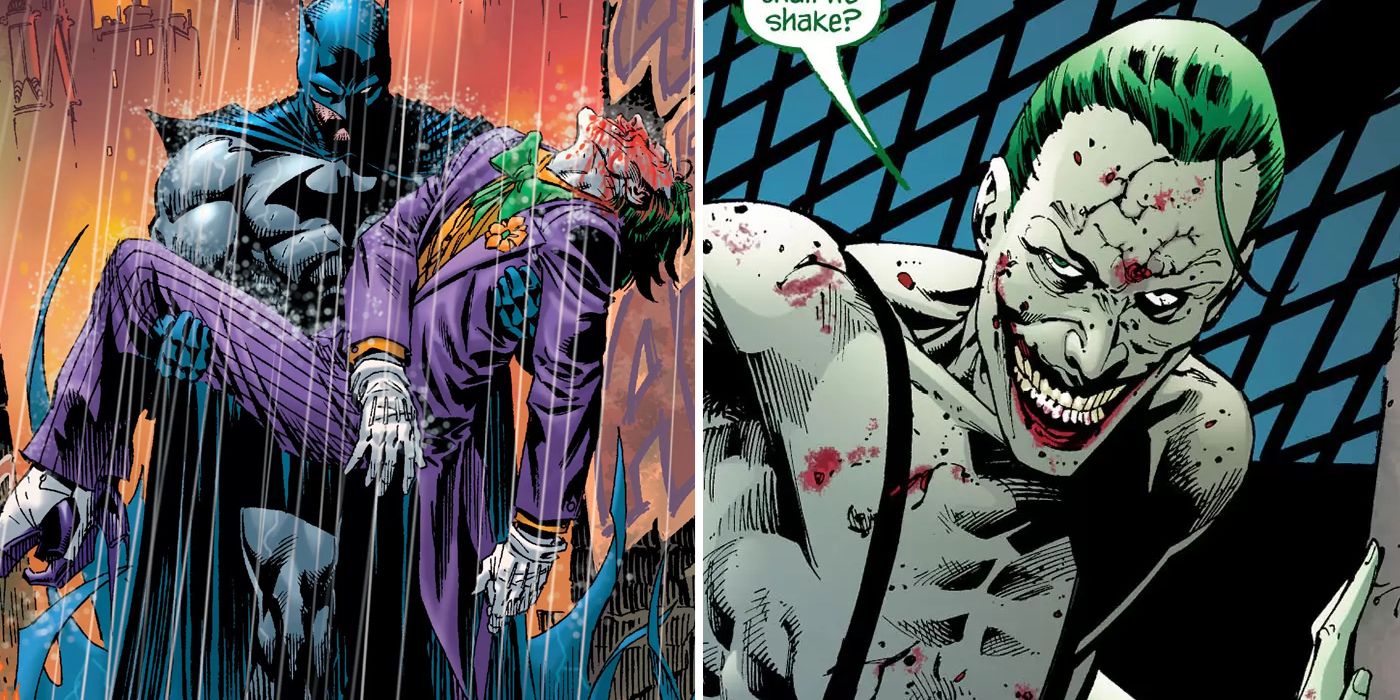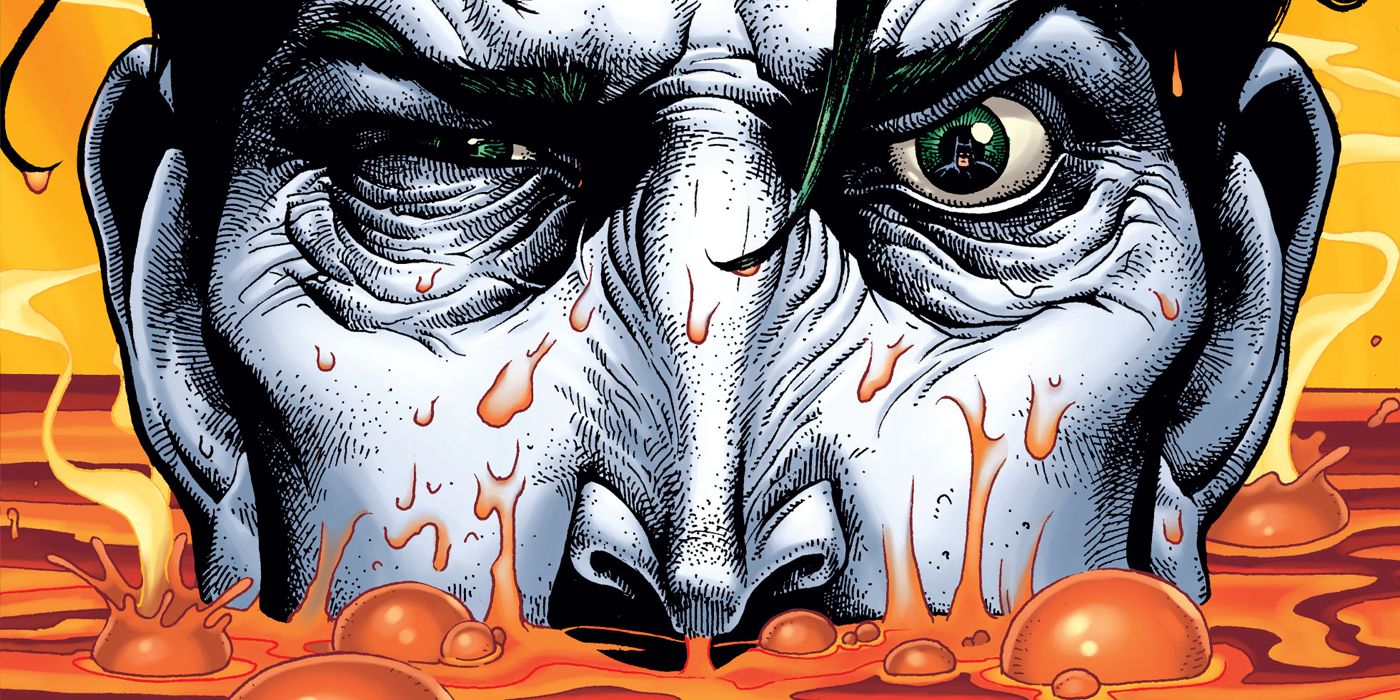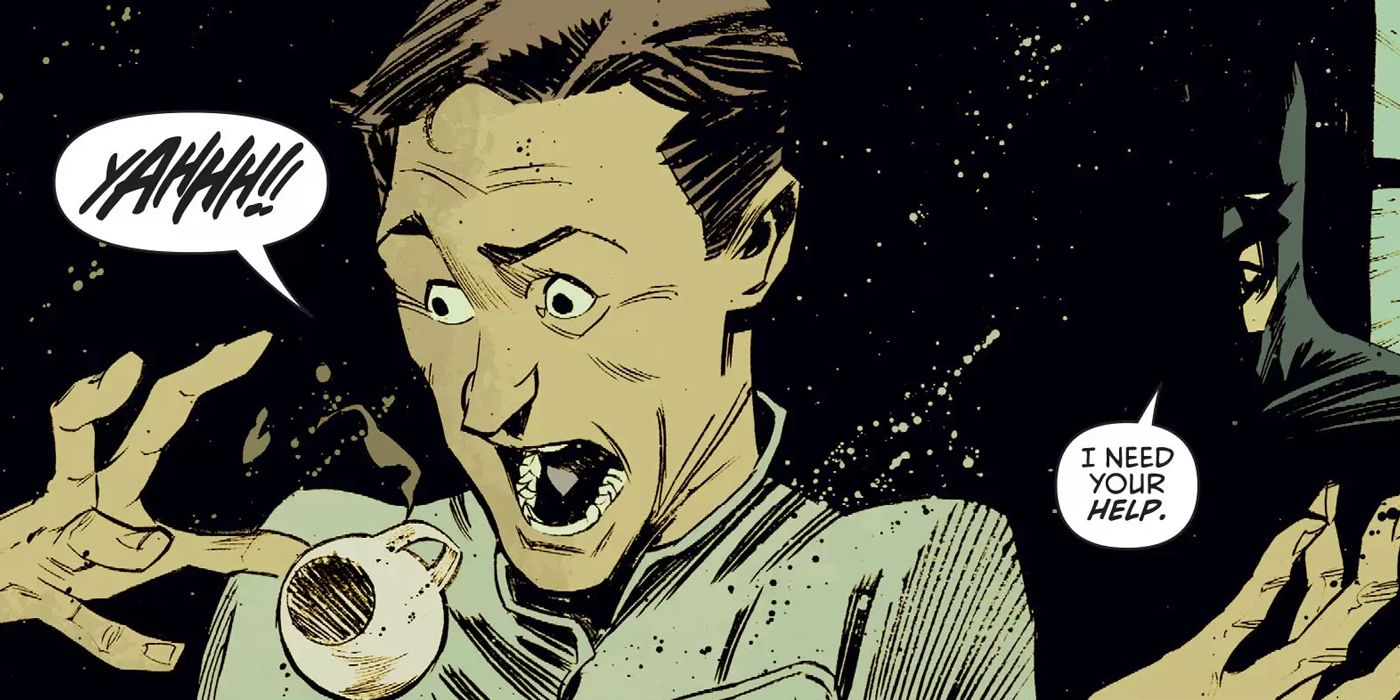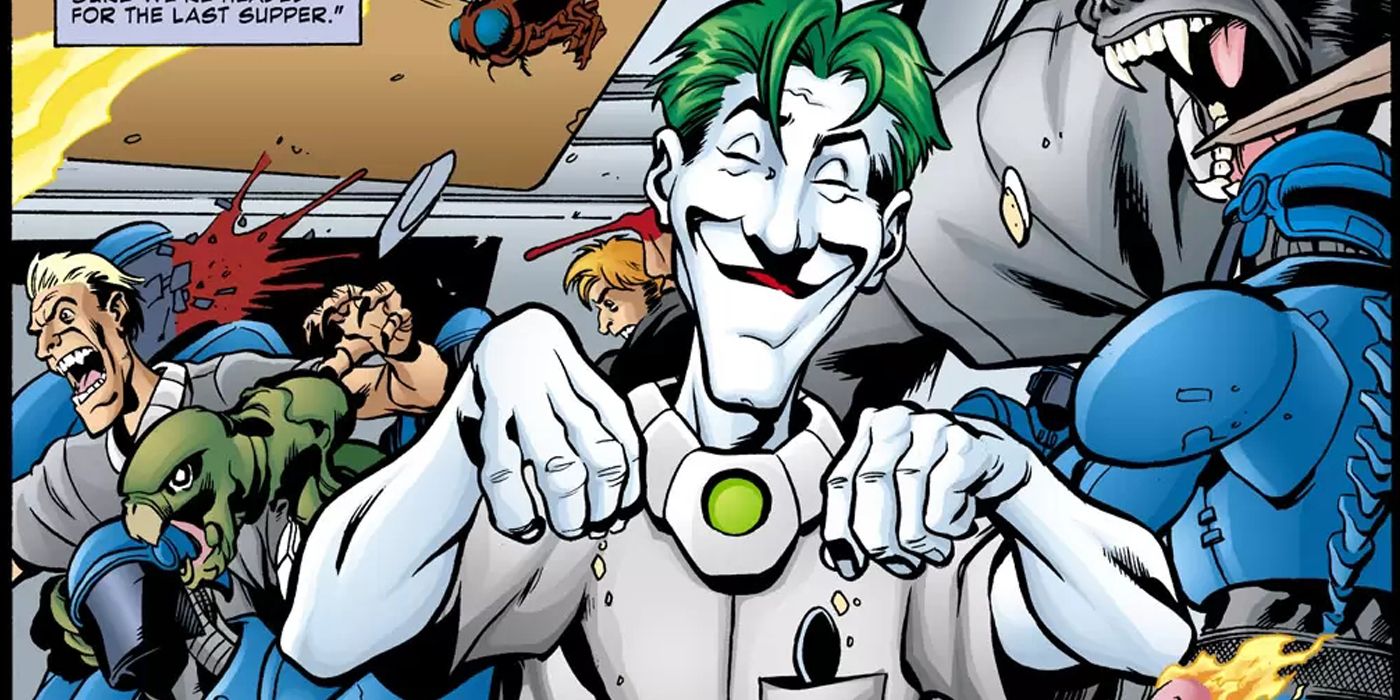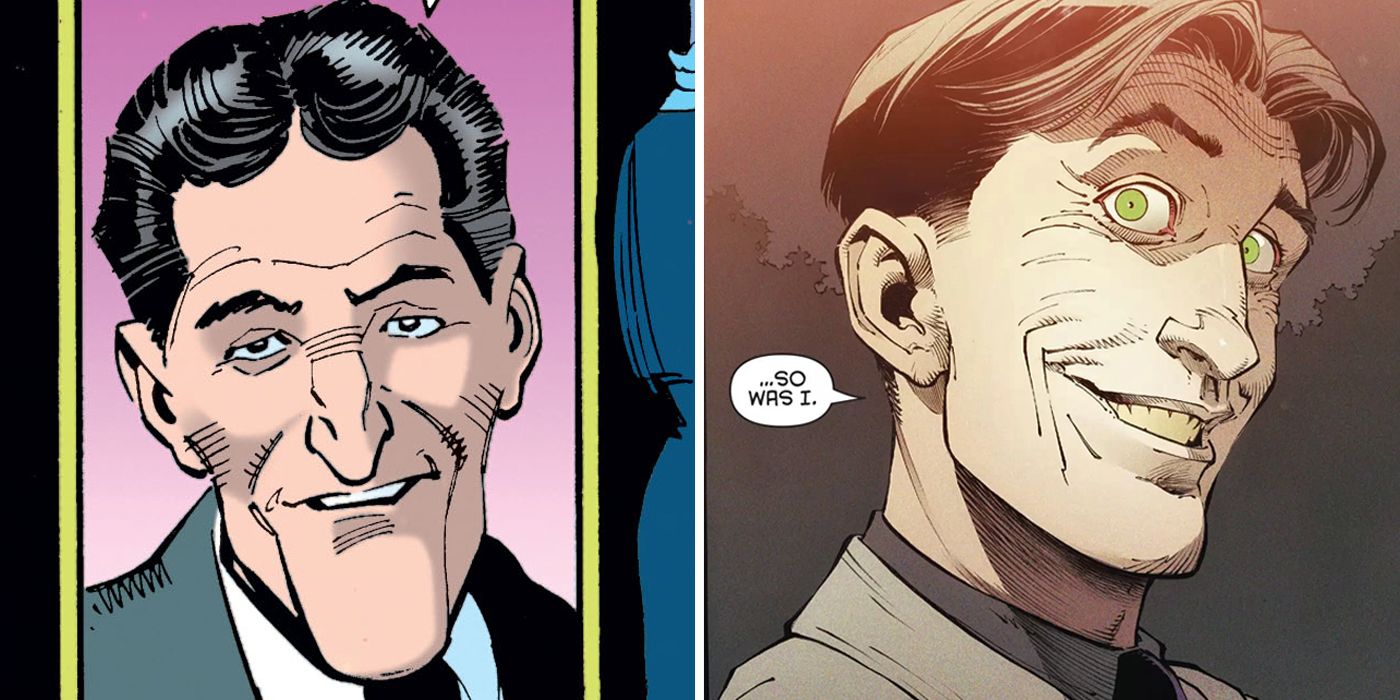The Joker might be the greatest villain in all of pop culture. Since his 1940 debut in Bill Finger, Jerry Robinson and Bob Kane's Batman #1, the Joker has earned his status as the Clown Prince of Crime by carving an unpredictable path of destruction throughout the DC Comics universe. Thanks to his chaotic nature, the Joker works equally well as a kid-friendly mischievous prankster and a deeply unsettling sadistic killer. Outside of comic books, the Joker has flourished on screen with iconic performances like Mark Hamill's cackling Batman: The Animated Series villain and Heath Ledger's Academy Award-winning role in The Dark Knight.
Now, CBR is taking a look at some of the craziest things about the Joker's body. In this list, we'll be looking at how the Joker's unique physiology has shaped his disturbing adventures over the last 75 years. Instead of focusing on any one incarnation of the Joker, we'll be looking at versions of the character from comics, movies, TV and video games in order to put together a more unified theory of the Joker. We’ll peer under the Joker's stark white skin and peel back the layers of his twisted mind to see why the Joker still stands as Batman's greatest villain.
15 JOKER BEGINS
In most versions of his ever-changing origin, the Joker went through one of comics' most famous physical transformations. Usually, the Joker's origin is more or less based on the first Joker origin story from 1951's Detective Comics #168 by Bill Finger, Lee Schwartz and Win Mortimer. While working as a criminal named the Red Hood, a relatively human Joker had a fateful encounter with Batman at the Ace Chemical Plant. To escape Batman, he jumped into a vat of chemicals that transformed him into the Joker.
In most versions of the story, the Joker's four-minute chemical bath gave him his distinctive white skin, green hair, exaggerated red lips, a permanent rictus grin and pushed his mind over the edge. In 2007's Batman Confidential #7, Michael Green and Denys Cowan explained the Joker's elongated jaw by establishing that the Joker had a broken jaw when he fell into the vat.
14 JOKER'S BRAIN
Unsurprisingly, the Joker's brain is as unique as his psychopathic mental state. As the Martian Manhunter explained in 1997's JLA #11, by Grant Morrison and Howard Porter, the less rational right hemisphere of the Joker's brain is noticeably smaller than the analytical left hemisphere. By transforming his brain into a similar shape, the shapeshifter subdued "all logical linear thought" to think like the Joker.
While the exact nature of the Joker's mental state is still unclear, some psychologists have said that the Joker most likely has an extreme case of antisocial personality disorder or frontal lobe trauma from falling into the chemical vat. In the graphic novel Batman: Arkham Asylum, Morrison and Dave McKean gave the Joker a more original diagnosis, "super-sanity." That 1989 story introduced this neurological disorder, where the Joker forms a new personality every day to cope with a physically overwhelming amount of sensory information.
13 JOKER'S FACE OFF
In 2011, DC rebooted its entire superhero line with the New 52. To start that new era off with a truly shocking moment, the Joker gave him a gruesome appearance. In Tony Daniel's Detective Comics #1, the Joker hired the surgical villain Dollmaker to cut off his face and stuck it to the walls of Arkham Asylum.
After a year-long absence, the Joker re-emerged during the 2012 crossover "Death of the Family." Using a series of belts and hooks, he reattached his increasingly gross face to make himself look even more disturbing than usual. As the Joker later explained, he did this as part of a plan to kill Batman's sidekicks and to show Batman that he was only the Joker under the "mask" of his face. While the Joker's face eventually grew back, the Joker's old face became a mask for the nihilistic villain, Joker's Daughter.
12 HE INVENTED A FIGHTING STYLE
While unpredictability and chaos define the Joker's mind, those ideas also define the way he moves. Despite having no martial arts training, the Joker regularly holds his own in physical struggles against Batman, one of the best martial artists in the world. Even though he doesn’t look like much of a fighter, the Joker has developed a unique fighting style that keeps his opponents guessing.
While most fighting styles are built around logical movement, the Joker's fighting technique relies on unorthodox moves and unpredictable combinations. Thanks to his slender frame, the Joker has been a fast and surprisingly acrobatic fighter. To make up for his lack of physical strength, the Joker also relies heavily on distraction and weapons like knives or toxins. Since he seems to ignore or enjoy feeling pain, the Joker will take hits that others would dodge, just to steal a victory with a brutal counter-attack.
11 JOKER'S TATTOOS
When the first images of Suicide Squad's Joker were released in 2015, fans were instantly divided over the character's numerous tattoos. Since Jared Leto's Joker went bare-chested through a lot of David Ayer's 2016 film, these tattoos became a signature part of the character's visual identity. Other than a forehead tattoo that read "Damaged," the tattoos were mostly of familiar images and phrases like "Ha Ha Ha," the Joker's grin and a skull with a jester's cap.
Despite their novelty, there's some comic book precedent for the Joker's tattoos. In 2008's All Star Batman and Robin, The Boy Wonder #8, Frank Miller and Jim Lee gave Joker a massive dragon tattoo on his back. This somewhat controversial look took place in the same alternate reality as Miller's The Dark Knight Returns. That means that the Joker retroactively had an unexplained and unmentioned tattoo in one of Batman's most famous stories.
10 JOKER'S SMILE
While the details of his creation were disputed by Bill Finger, Jerry Robinson and Bob Kane for decades, the Joker's creators agreed that his trademark smile was inspired by film's silent era. As the Joker was being designed, Finger brought in a picture of Conrad Veidt from the 1928 film, The Man Who Laughs. This image shaped the Joker's look and was referenced explicitly with the title of Ed Brubaker and Doug Mahnke's 2005 graphic novel, Batman: The Man Who Laughs.
During the 2000s, Joker's grin changed dramatically. In Christopher Nolan's 2008 movie The Dark Knight, Heath Ledger's Joker had a less toothy grin formed by the scars of a "Glasgow smile" on both sides of his mouth. In comics, Joker had to get fake teeth after Barbara Gordon knocked his teeth out with a baton in 2009's Birds of Prey #124, by Tony Bedard and Claude St. Aubin.
9 TOXIC IMMUNITY
While the Joker doesn't really have a reputation as a scientific genius, his trademark Joker Venom makes him one of the better chemists in the DC Universe. Since his first appearance, this mixture of toxic chemicals and drugs like laughing gas has left the Joker's victims dead with pale skin and twisted Joker-esque grins. Thanks to his repeated exposure to those chemicals, the Joker became immune to the Joker Venom and most other toxins.
When a deadly batch of his toxin was released in the animated 2012 adaptation Batman: The Dark Knight Returns, the Joker looked on unaffected while scores died around him. The Joker was also totally immune to the Scarecrow's hallucinogenic Fear Toxin in 1993's Detective Comics #664, by Chuck Dixon and Graham Nolan. In 1996's Batman and Captain America, by John Byrne, the Joker was equally unaffected by the Red Skull's skin-dissolving Dust of Death.
8 JOKER GOT BUFF
While Joker Venom might be the villain's oldest weapon, it's not the only Venom in Batman's world. Since his 1993 debut, the Batman villain Bane has used an unrelated substance called Venom to enhance his already considerable strength. Naturally, the chemical-loving Joker has injected himself with Bane's Venom on a few occasions. In a 2005 episode of The Batman, a Venom-fueled Joker captured Batman before being taking down by Batgirl in a robot suit.
A few years later, the Joker got pumped up again in the climax to Rocksteady Studios' Batman: Arkham Asylum. In that blockbuster 2009 game, the Joker used Titan, a compound that combined Bane's Venom with Poison Ivy's mutated plant matter. While Titan usually drives its users insane, that wasn't really a problem for the Joker. The Joker's muscles grew so quickly that his skin began to tear, and Batman only defeated him with point-blank explosives.
7 HIS BLOOD IS POISON
While the Joker's habitual exposure to toxic chemicals might've made him resistant to their effects, it made the Joker even more poisonous than he already was to everyone around him. After taking Titan in Batman: Arkham Asylum, the Joker's body was an incubator for Titan Disease in 2011's Batman; Arkham City. By mingling with the other exotic chemicals in the Joker's bloodstream, this disease became so potent that it killed anyone who contracted it within 24 hours including, ironically, the Joker.
In comics, the Joker's blood has been equally dangerous on its own. A mosquito died after sucking some of the Joker's blood in Grant Morrison and John Van Fleet's Batman #663. A few years later, Damian Wayne's Robin was paralyzed after a few drops of Joker blood fell on him during a fight in 2010's Batman & Robin # 14, by Morrison and Frazer Irving.
6 HE HAS A HEALING FACTOR
Over the course of his countless battles with Batman, the Joker has suffered a breathtaking number of injuries that would kill anyone else. While some of his miraculous recoveries can be excused by his extreme pain tolerance, some of his injuries couldn't heal by conventional means. In 2015's Batman #40, Scott Snyder and Greg Capullo revealed the Joker regrew his missing face after bathing in a pool of dionesium under Gotham City.
In addition to restoring his face, Joker's dip in dionesium briefly gave him a healing factor. With his newfound abilities, the Joker orchestrated his final campaign against Batman, which was the center of the 2015 crossover "Endgame." After sustaining injuries throughout the crossover, the Joker's healing factor was exhausted after a final battle to the death against Batman. While there was enough of dionesium to heal Batman and the Joker's fatal wounds, the supply was exhausted.
5 HE HAD RECONSTRUCTIVE SURGERY
Even before he removed it, the Joker's face went through some major trauma. When Batman imposters were running around Gotham City in Grant Morrison and Andy Kubert's Batman #655, one of the fake heroes shot the Joker in the face. While he miraculously survived the encounter, the Joker re-emerged with a terrifying new look.
As Morrison and John Van Fleet revealed in 2007's Batman #663, the Joker had major plastic surgery reconstruct his face. Inspired by Heath Ledger's Joker from The Dark Knight, the Joker's new grin ended with scars on both sides of his lips. This grin also left his gums exposed and briefly took away his ability to speak. The Joker also had a blood red scar on his forehead where he was shot. While the level of the look's gruesome detail varied depending on who drew it, the Joker kept this look for a few years.
4 REVIVED BY A LAZARUS PIT
While the Lazarus Pits have kept Ra's al Ghul alive for centuries, he's not the only one of Batman's enemies who's taking a dip in its life-restoring waters. In the 2001 storyline, "The Demon Laughs," the Joker teamed up with Ra's to help him kill most of the world's population with a deadly contagion. After the Joker's inevitable betrayal occurred, Ra's responded by shooting him repeatedly and leaving him for dead.
In Batman: Legends of the Dark Knight #145, by Chuck Dixon and Jim Aparo, Batman revived the Joker moments after death by dipping him in a Lazarus Pit. While Lazarus Pits usually make their users hyper-aggressive and temporarily insane, this one had the opposite effect on the Joker. As a remorseful Joker thought about his violent past, he freely told Batman how he could stop Ra's from unleashing his super-virus before returning to his usual psychopathic self.
3 HE CAN DISGUISE HIS APPEARANCE
Between the green hair and his stark white skin, the Joker stands out in any crowd. Despite his natural appearance, the Joker has been surprisingly adept at transforming himself physically. While Heath Ledger's Joker wasn't a master of disguise, the villain hid his identity well enough to pose as a normal-looking police officer in a funeral procession in The Dark Knight.
In 2013's Batman Annual #2, by Scott Snyder, Marguerite Bennett and Wes Craig, readers were introduced to Eric Border, a new orderly at Arkham Asylum. Initially, he seemed like someone who genuinely wanted to help people and became Batman's closest ally inside Arkham. However, Border revealed that he was really the Joker in 2015's Batman #36, by Snyder and Greg Capullo. In addition to creating a believable psychological profile for Border, the Joker concealed his identity by painting his skin and using muscle relaxers to loosen his rictus grin.
2 REVIVED BY BATMAN (AGAIN)
The early 2000s were a strange time in the DC Universe. While Lex Luthor was President of the United States, the Joker thought he was dying from a brain tumor in the 2001 crossover "The Joker's Last Laugh." The Joker got the bad news from his prison doctors in Joker: Last Laugh #1, by Chuck Dixon, Scott Beatty and Pete Woods. Hoping to go out with a bang, the Joker infected all of the supervillains in the prison with his Joker Venom and began to spread chaos around the world.
Over the course of the crossover, Black Canary learned that the Joker's doctors had faked their diagnosis in a misguided attempt to make the Joker reform. Despite his incorrect diagnosis, he still died for a few seconds after Nightwing beat him to death. Thanks to some mouth-to-mouth resuscitation from a quick-thinking Batman, the Joker was revived and returned to prison.
1 JOKER WENT SANE
Even though the Joker might seem like a primal force, he's transformed back into a perfectly normal person on a few occasions. In Batman: Legends of the Dark Knight #65, the Joker thought he finally killed Batman. As J.M DeMatteis and Joe Staton's 1994 storyline "Going Sane" unfolded, the Joker's crazed persona evaporated, and he became a law-abiding citizen named Joseph Kerr. After getting treatment for his unusual skin condition, he got engaged to a woman named Rebecca Brown.
In 2016, the Joker went through a similar transformation as revealed in 2016's Batman #47, by Grant Morrison and Greg Capullo. After falling into dionesium again, the Joker emerged with a healed mind and body. With apparent amnesia, the human Joker became a butcher who liked sitting in the park. Despite their promising starts, this story and "Going Sane" ended with the Joker's heart-breaking descent back into madness after Batman returned.

